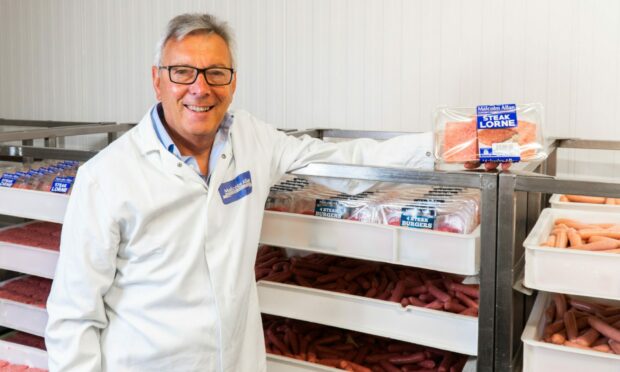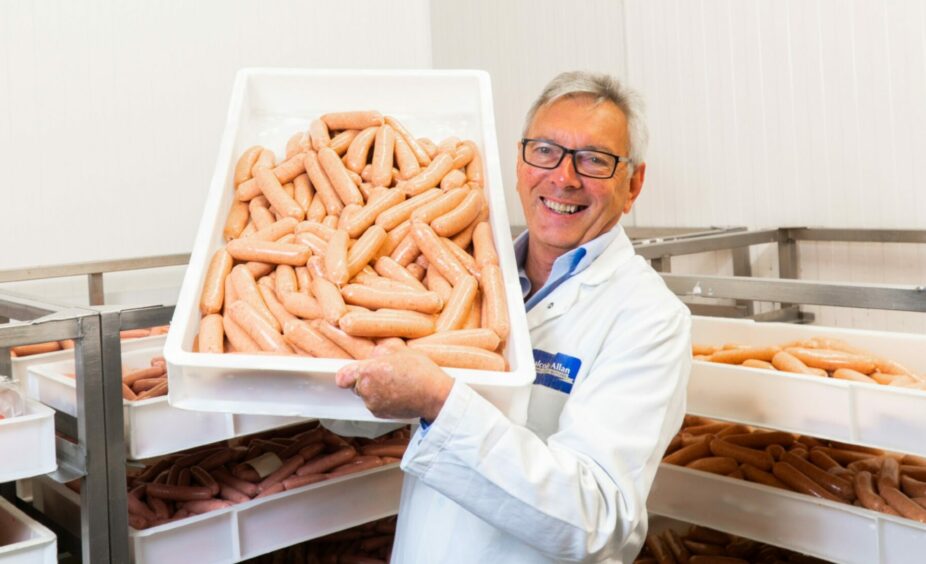Malcolm Allan is Scotland’s third biggest food brand and the company’s classic steak pie and steak Lorne are familiar products in major supermarkets.
However these are testing times for the industry, and Gordon Allan, who runs the business with his brother James, believes communication and collaboration between businesses is key to survival.
He said: “Scotland is a small country and it is important that businesses in the same sector support each other and share resources.”
Gordon said one example was a collaboration with Bruce Farms, which involves utilising their cold store in Dundee when it isn’t required for peas, and developing an apple and Scottish berry tart to make use of surplus fruit.
Sausages
He added: “We also work with Mackays to produce a pork and marmalade sausage and with Taste of Arran to produce a pork and arran mustard sausage.
“Mcghees provide the tattie scones for our breakfast packs and Scotty Brand the potatoes and swede for our haggis, neeps and tatties.”
He says this sort of co-operation allows the company to maintain quality and provenance in its products, which are all developed and manufactured at the base in Larbert.
The company still works as it did when it was a family butcher with 22 shops around Scotland, with cattle bought from marts in the Borders, Stirling and Aberdeen which are then boned and butchered in the firm’s own cutting plant.
Supermarkets
The business started phasing out its shops about 20 years ago, and now supplies all the major supermarkets.
However the cost of all bought-in ingredients has increased significantly in the last year, with further price increases due in January.
Gordon said: “We are experiencing cost challenges across all raw materials and services; for example, we buy a lot of young bulls out of Aberdeenshire and have just seen the cost of killing them rise from £110 to £210 per head in a week.”
Supplies of cardboard and aluminium packaging are limited and controlled by one or two big firms, but the company employs 150 people, and labour is now one of the biggest issues.
He recently visited Larbert High School, the biggest in Scotland with 2,400 pupils, but could only recruit four students. He is also struggling to recruit seasonal workers in the run-up to Christmas and says a consequence is having to cancel an order from Tesco for 40,000 steak pies.
On dealing with supermarkets Gordon said: “The gap between when we incur an increase in costs and we can pass it on is what kills smaller firms like us.
Duty
“I believe it is the supermarkets’ duty to provide customers with a choice but at the moment they need to move quicker when reacting to cost increase requests from
manufacturers.
“We were forced to de-list our steak pies from one customer earlier this year due to prolonged price negotiations.
“The supermarket came back on board but by that time we had trimmed
production capacity and it was unnecessary disruption for all concerned, especially as we had provided all the information required to justify the increase.
“This is no fun for anyone just now, from the farmers to the abattoirs to the
manufacturers.
“We should all be able to make enough money to re-invest and pay our staff well, but as costs rise and prices go up, it is the consumer who will pay as the supermarkets will
always retain their margin.”

